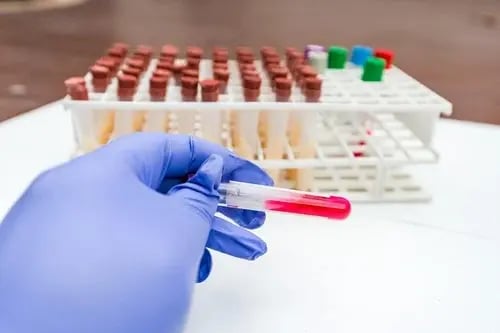Share this
blood sample storage: ensuring viability and accurate results
by Neoteryx Microsampling on Mar 14, 2017 6:31:00 AM
For specimen integrity and accurate data, blood samples must be stored in specific ways. The way the blood is initially collected and how it is transported and stored affect its long-term viability.

1. Correct Sample Size: Aim for Precision
For effective sample analysis:
-
Volume Matters: A blood sample should be substantial enough to conduct two versions – either duplicate or distinct – of the intended tests.
-
Optimal Size: To ensure test repeatability and confirmation, draw about 2 to 2.5 times the required volume.
-
Time Sensitivity: Blood should ideally be analyzed in the lab within four hours of collection. The lab must separate serum samples from whole blood within two hours post-draw.
The Role of Additives': Incorporating elements like anticoagulants, clot accelerators, or heparin will depend on blood test specifications. Such additives can uniquely impact sample testing and storage.
2. Proper Temperature for Sample Maintenance: Storage Conditions Matter
Blood storage temperature varies based on its purpose:
-
Room Temperature: Ranges between 15° and 30°C.
-
Refrigerated: Fluctuates between 2° and 10°C.
-
Frozen: Sits at or below -20°C.
For specific molecular genetic tests, blood stability spans several days across a wide temperature spectrum. While DNA is stable for up to a month at room temperature, live blood cell viability starts waning in two days. Consequently, for prolonged use, it is advisable to either culture the samples or freeze them using liquid nitrogen.
3. Assessing Storage Duration: Prioritize Optimal Conditions
While blood banks mark six weeks as the blood's "shelf life," research from Johns Hopkins University indicates a decline in the efficiency of red blood cells in distributing oxygen-rich cells post the three-week mark.
The flexibility of blood stored longer than three weeks reduces considerably, especially if not refrigerated, making it less effective in navigating the body's tiniest capillaries.
For any post-draw use, such as transfusions, it's pivotal to note that blood stored unrefrigerated beyond three weeks never regains its initial flexibility. Hence, blood samples should be swiftly tested, refrigerated for interim storage, or frozen if intended for extended storage.
Looking Ahead: The Benefits of Microsampling
The future of blood collection and storage sees promise with dried blood microsampling technology. Innovative microsampling tools offer efficient blood collection, remote sampling options, and sample drying in ambient conditions (room temperature). With dried blood samples, there is no need for refrigerated storage or complicated and expensive shipping.
The benefits of remote microsampling for dried blood analysis can expand your study options and your pool of study participants, while also reducing your shipping costs.
Dive deeper into the world of microsampling by visiting our industry applications to experience efficient and reliable storage solutions.

Image Credits: iStock, Shutterstock
Share this
- Microsampling (206)
- Research, Remote Research (119)
- Venipuncture Alternative (105)
- Clinical Trials, Clinical Research (83)
- Mitra® Device (73)
- Therapeutic Drug Monitoring, TDM (51)
- Dried Blood Spot, DBS (39)
- Biomonitoring, Health, Wellness (30)
- Infectious Disease, Vaccines, COVID-19 (24)
- Blood Microsampling, Serology (23)
- Omics, Multi-Omics (21)
- Decentralized Clinical Trial (DCT) (20)
- Specimen Collection (18)
- Toxicology, Doping, Drug/Alcohol Monitoring, PEth (17)
- Skin Microsampling, Microbiopsy (14)
- hemaPEN® Device (13)
- Preclinical Research, Animal Studies (12)
- Pharmaceuticals, Drug Development (9)
- Harpera Device (7)
- Industry News, Microsampling News (5)
- Antibodies, MAbs (3)
- Company Press Release, Product Press Release (3)
- Environmental Toxins, Exposures (1)
- July 2025 (1)
- May 2025 (1)
- April 2025 (2)
- December 2024 (2)
- November 2024 (1)
- October 2024 (3)
- September 2024 (1)
- June 2024 (1)
- May 2024 (1)
- April 2024 (4)
- March 2024 (1)
- February 2024 (2)
- January 2024 (4)
- December 2023 (3)
- November 2023 (3)
- October 2023 (3)
- September 2023 (3)
- July 2023 (3)
- June 2023 (2)
- April 2023 (2)
- March 2023 (2)
- February 2023 (2)
- January 2023 (3)
- December 2022 (2)
- November 2022 (3)
- October 2022 (4)
- September 2022 (3)
- August 2022 (5)
- July 2022 (2)
- June 2022 (2)
- May 2022 (4)
- April 2022 (3)
- March 2022 (3)
- February 2022 (4)
- January 2022 (5)
- December 2021 (3)
- November 2021 (5)
- October 2021 (3)
- September 2021 (3)
- August 2021 (4)
- July 2021 (4)
- June 2021 (4)
- May 2021 (4)
- April 2021 (3)
- March 2021 (5)
- February 2021 (4)
- January 2021 (4)
- December 2020 (3)
- November 2020 (5)
- October 2020 (4)
- September 2020 (3)
- August 2020 (3)
- July 2020 (6)
- June 2020 (4)
- May 2020 (4)
- April 2020 (3)
- March 2020 (6)
- February 2020 (3)
- January 2020 (4)
- December 2019 (5)
- November 2019 (4)
- October 2019 (2)
- September 2019 (4)
- August 2019 (4)
- July 2019 (3)
- June 2019 (7)
- May 2019 (6)
- April 2019 (5)
- March 2019 (6)
- February 2019 (5)
- January 2019 (8)
- December 2018 (3)
- November 2018 (4)
- October 2018 (7)
- September 2018 (6)
- August 2018 (5)
- July 2018 (8)
- June 2018 (6)
- May 2018 (5)
- April 2018 (6)
- March 2018 (4)
- February 2018 (6)
- January 2018 (4)
- December 2017 (2)
- November 2017 (3)
- October 2017 (2)
- September 2017 (4)
- August 2017 (2)
- July 2017 (4)
- June 2017 (5)
- May 2017 (6)
- April 2017 (6)
- March 2017 (5)
- February 2017 (4)
- January 2017 (1)
- July 2016 (3)
- May 2016 (1)
- April 2016 (2)


Comments (21)